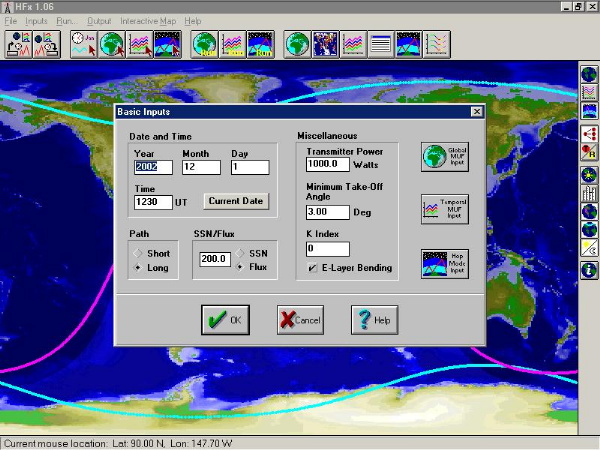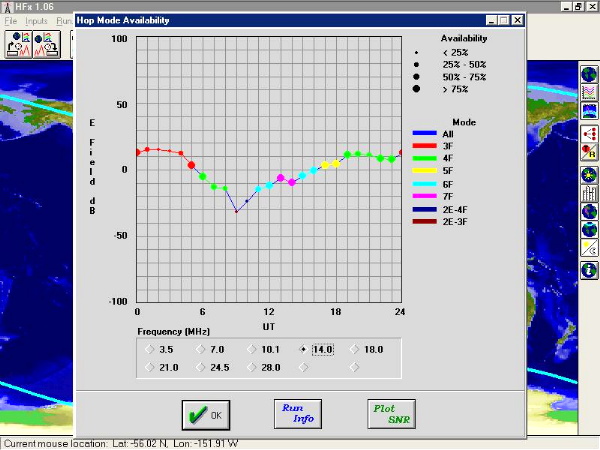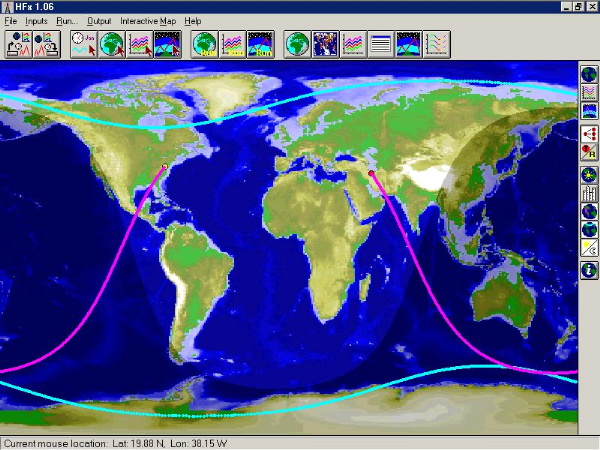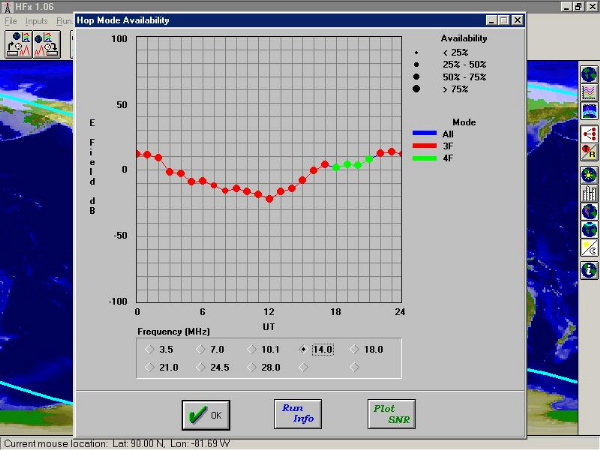Long Path
HF Radio Propagation
.
By Norm Styer - AI2C de Clarkes Gap, Virginia
The shortest path is not always the best path. A prime example of long path openings is illustrated below. It shows almost ideal conditions and what happens at the magic hour when the terminals are both within or close to the Gray Line. The date is December 1. These are screen print images from my HFx High Frequency Wave Modeling Program. There are other programs out there but I like the simple illustrations and the flexibility in initializing the input parameters. The first 4 prints are associated with a long path operation and the fifth one illustrates availability for the same conditions for a short path during the late fall season. The remaining charts show what happens during the summer.

This illustrates the path of the signal including the F-Layer altitude and distances. This is a long path of 14 F1 and F2 Layer hops.

This opening does not last long - typically 20 to 30 minutes from the mid Atlantic area. Fellows further south like in Florida enjoy a long and better opening. Signal levels are moderate S6 to S-7 though on good days - like 1 to 30 days - they can be stronger. Other areas on South Asia are there on the long path also and the VU's from India can be worked most morning. And as time passes State-Side stations further west start to take over the path as the sun rises.

This illustrates some the input parameters which may be set with this program and of course, saved to file and can be revisited as conditions change.

This is the late fall - early December - short path availability. It has to compete with all the other louder European but should be checked. Sometimes you can work them long path and then turn the yagi around and work them short path.

Now, during the summer the earth is illuminated in the north. Although the long path is still there, there is a better short path opening to South-West Asia around 0100Z or earlier.

Long Path Availability in early June between the East Coast and Tehran.

And finally, here is the Short Path availability during Summer.The northern pole is constantly illuminated and this path is much stronger in the summer.

Conditions are always changing.
Solar activity and its influence upon the Earth, the position of the earth relative
to time of day and axis tilt - time of year - all play major roles in influencing
HF propagation. It takes years of listening and operating to learn all these
secrets and is what makes HF radio so interesting.
Best Regards, Norm Styer
- AI2C de Clarkes Gap, Virginia.
PS. I know these long paths work for in 1974-76 I was on the other end as EP2SN in Tehran, Iran and put several hundred East Coast stations in the log and most were via the long path.
NNNN
Back To The Home Of The Loudoun Amateur Radio Group - K4LRG On The Internet